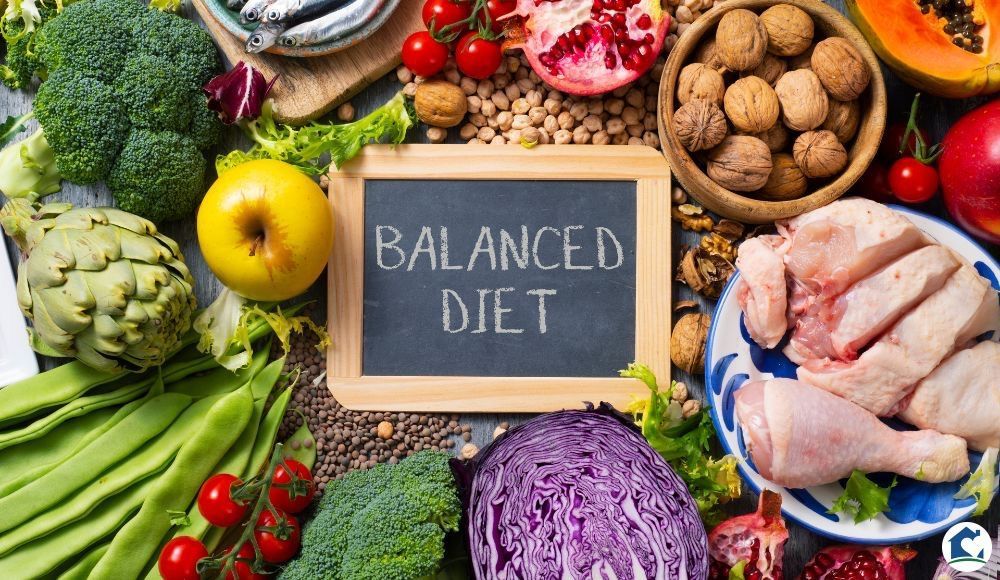Healthy Eating for Older Adults
Maintaining a balanced diet becomes essential to support overall health and well-being as we age. Healthy eating for older adults focuses on incorporating nutrient-rich foods, managing portion sizes, and staying hydrated. These dietary habits can enhance energy levels, support cognitive function, and improve quality of life, ensuring a vibrant and active aging process.
What is Healthy Eating for Older Adults?
Healthy eating for seniors involves consuming various nutrient-dense foods while managing calorie intake. Key aspects are:
- Including fruits, vegetables, whole grains, lean proteins, and low-fat dairy or fortified soy alternatives.
- Prioritizing foods rich in calcium, vitamin D, potassium, dietary fiber, vitamin B12, and protein.
- Reducing portion sizes if activity levels are low, as older adults generally have lower calorie needs but similar or increased nutrient requirements.
- Drinking plenty of fluids throughout the day, as the sense of thirst may decrease with age.
- Reducing the intake of added sugars, saturated fats, and sodium.
- Discarding food with "off" odors or textures and paying attention to "use by" dates.
What are the Benefits of Healthy Eating?
Your diet does more than fill your stomach—it shapes your future. Eating well over the years can keep you feeling stronger, sharper, and healthier. Here’s how a balanced diet can pave the way for better aging:
- Bones that won’t break easily: A proper diet reduces your odds of developing brittle bones (osteoporosis) and muscle decline (sarcopenia).
- A heart that keeps beating strong: Stick to the U.S. Dietary Guidelines, and your ticker will love you for it. Better food, better beats, better life.
- Dodging diabetes: A 2022 study in PLoS Medicine found that minimally processed foods lower the risk of type 2 diabetes by up to 30%.
- Avoiding cancer: According to a 2021 report in Nutrients, fruits, veggies, fatty fish, and unsweetened yogurt are your go-to's for slashing the risk of significant cancers like colorectal, breast, lung, and prostate.
- A sharp brain: A 2022 study in Neurology found that the nutrients in greens and berries lower the risk of dementia in adults over 45.
- Goodbye to creeping weight gain: Eating smart doesn’t just mean feeling tremendous but keeps the pounds at bay.
Different Approaches to Healthy Eating
As we age, our eating habits often need a minor rework to keep up with what our bodies need (and don't need anymore). The USDA has some easy-to-follow food patterns to help seniors eat healthy without the guesswork. Here are three options:
1. Healthy U.S.-Style Eating: This pattern includes your favorite classic meals in the healthiest way possible. It includes a mix of veggies, fruits, whole grains, low-fat or fat-free dairy, and proteins like seafood, poultry, meat, eggs, nuts, seeds, and soy.
2. Mediterranean-Style Eating: This plan brings the Mediterranean coastline to your table with lots of fruits, less dairy, and plenty of seafood.
3. Vegetarian Eating: Vegetarian meals skip meat, poultry, and seafood but emphasize beans, peas, soy products, nuts, seeds, whole grains, and low-fat or fat-free dairy. Even without meat, this plan has sufficient protein to maintain muscle.
We Can Help You Age in Place
Phoebe Ministries offers several options—from at-home care to independent living communities—to ensure you or a loved one can continue living safely and independently.
Call us today at 610-625-5206 or connect with us online to learn more!












